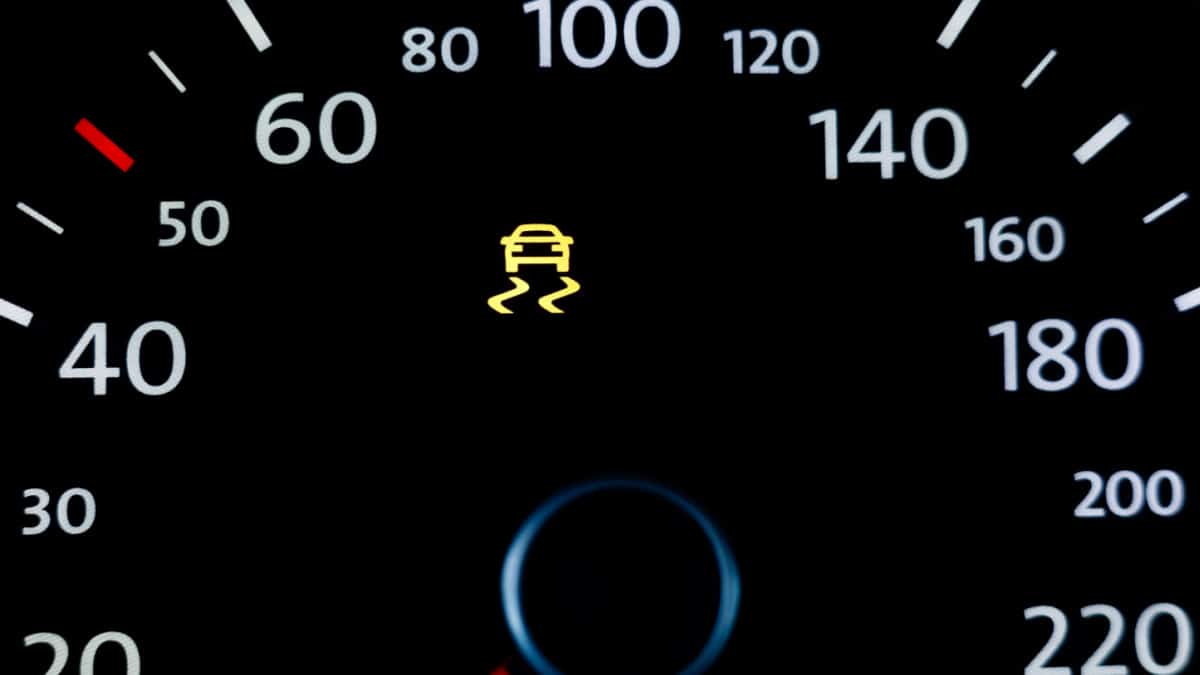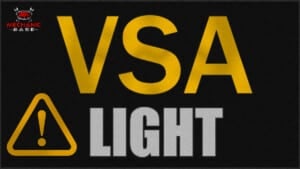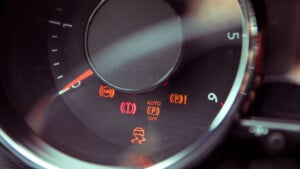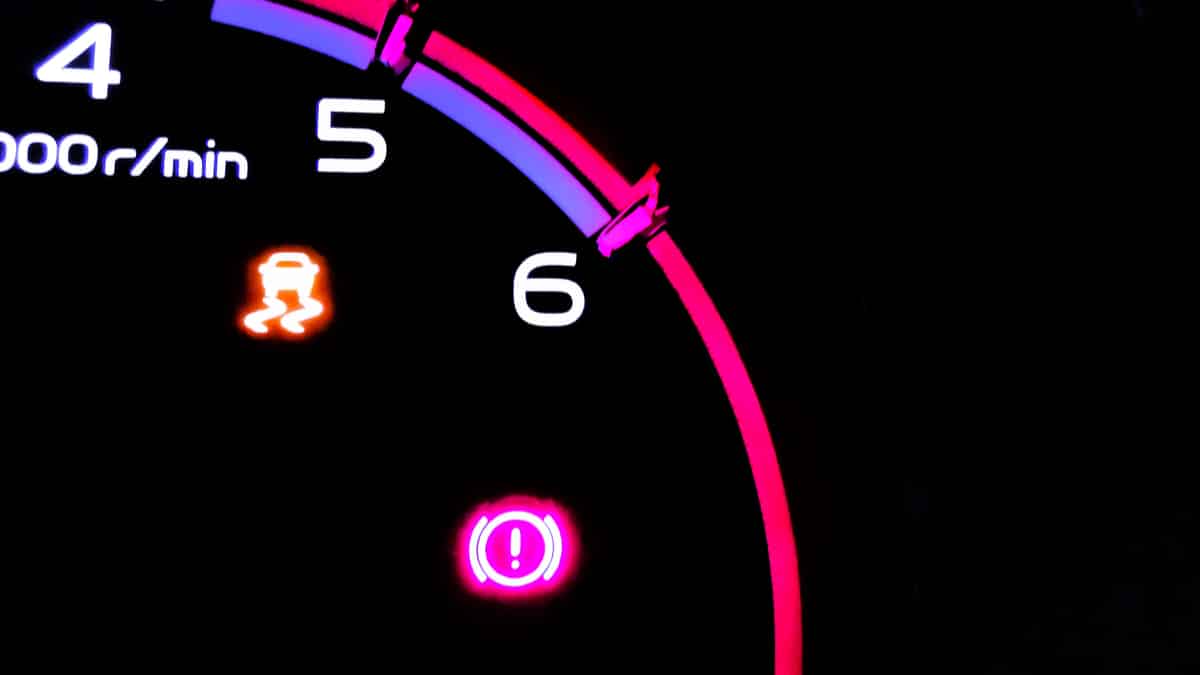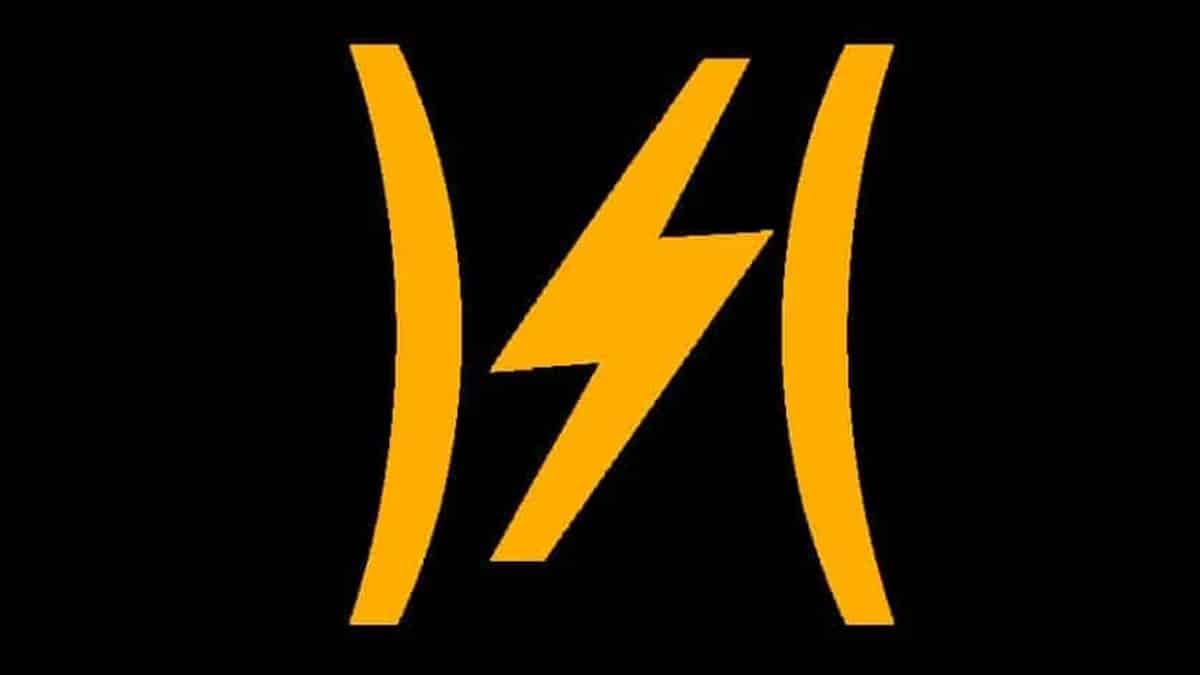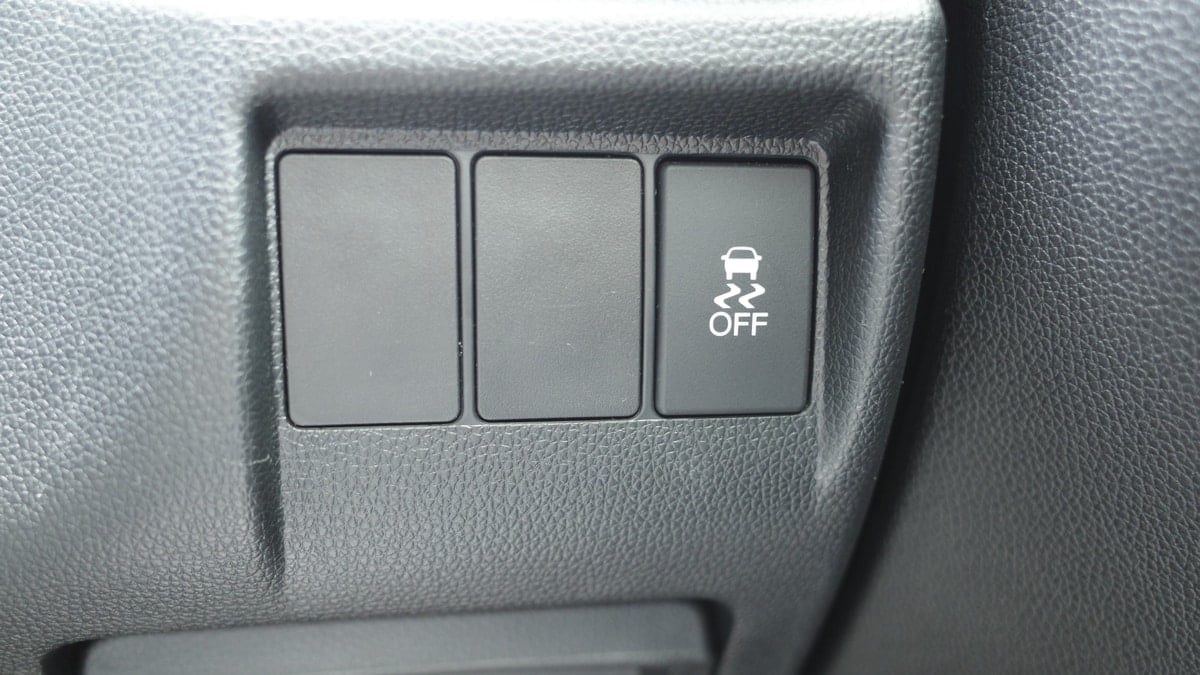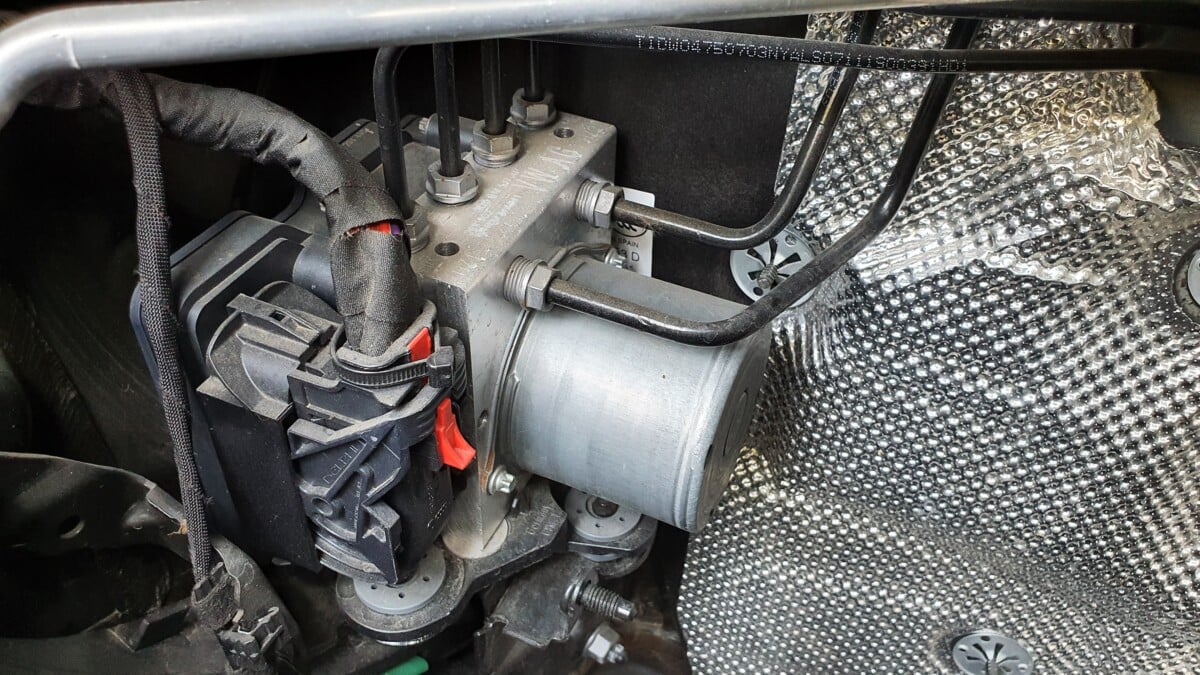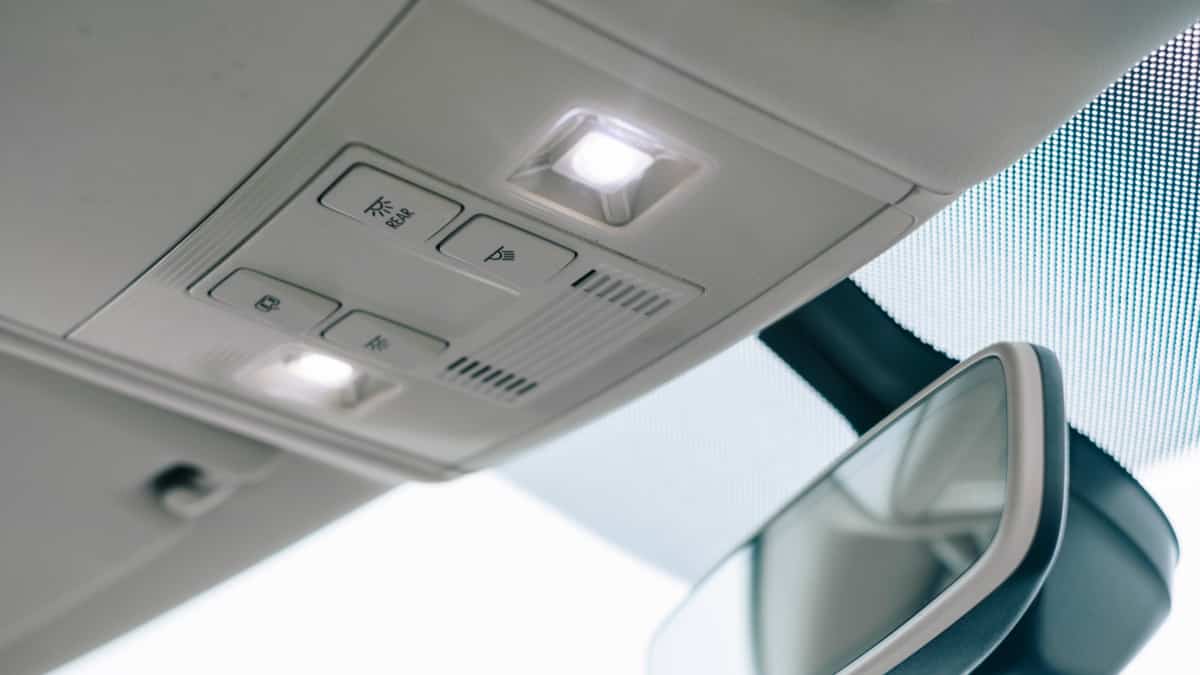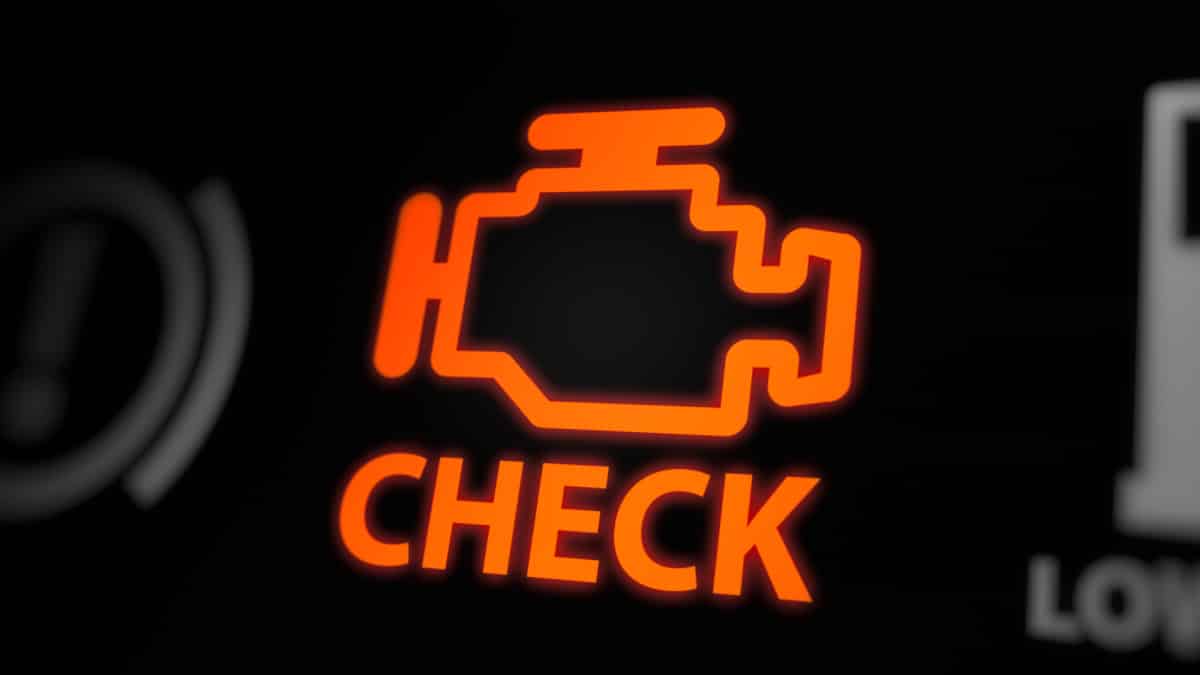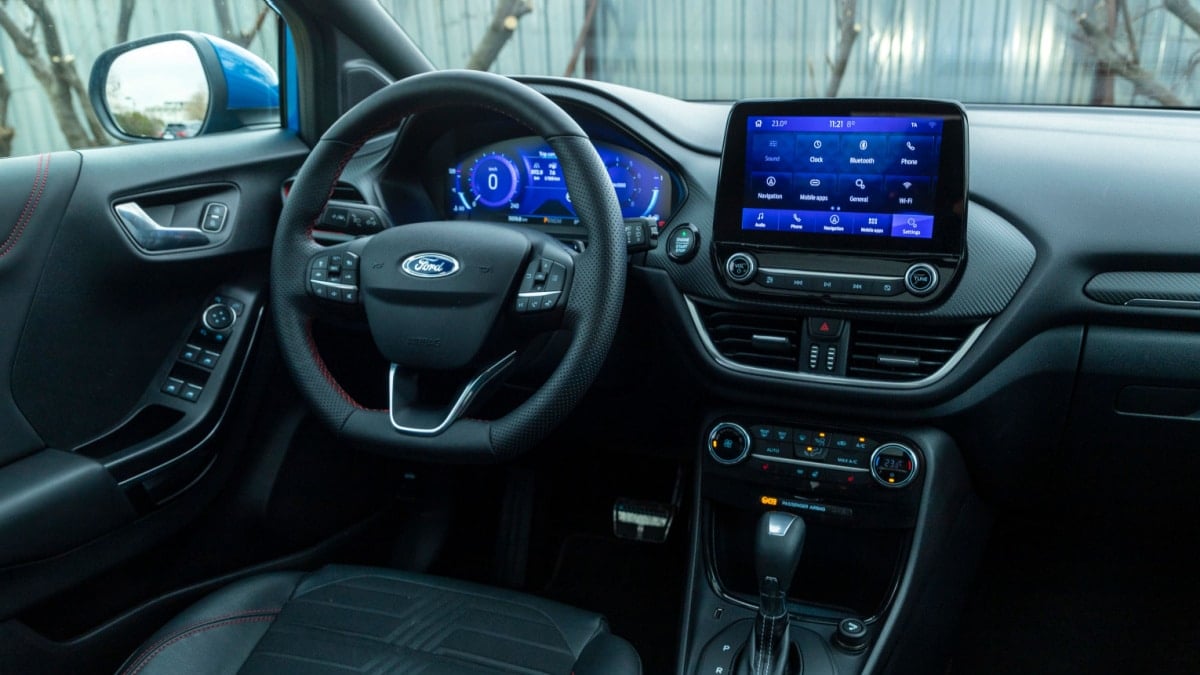The traction control system has been standard on vehicles since 2012. It helps to prevent slippage when driving on slick surfaces. However, there are times when something can go wrong with the system and you will see the traction control light come on. What does it mean when the traction control light won’t turn off, and what should you do about it?
We answer these questions for you, so you can regain control over the drive. We also look at some of your other concerns so you understand the system better.
Reasons Your Traction Control Light Won’t Turn Off
If the traction control light won’t go out, it could be due to the ABS system, including the wheel speed sensors or reluctor ring. It could also be due to a defective steering angle sensor, ABS control module or a failing battery. If not, consider a wiring issue, a blown fuse or low brake fluid.
We’ll explain each of these in detail, so you can pinpoint what’s going on.
1. Bad ABS Wheel Speed Sensor

Wheel speed sensors measure the movement of each wheel. When the wheels rotate at differing rates, the traction control system kicks on to help the vehicle regain traction. In normal operation, the traction control light will come on until traction is regained.
Because of where the sensors are located, debris can start to build up. If dirt sits on the sensor or the electronics become damaged, the data can no longer be verified and the light will come on. During this time, the traction control system won’t work either.
RELATED: 4 Signs Of A Bad ABS Wheel Speed Sensor
2. Bad ABS Reluctor Ring

The ABS ring helps to measure the difference in the speeds between the wheels. The information that the ring provides is used by the speed sensors, which then gets sent to the ABS controller. If the ABS ring is defective, you can’t get accurate readings, which throws off the entire system.
The traction control and ABS light will come on to alert you of the problem. You’ll also feel the brake pedal pulsate when pushing on it. Until the problem is resolved, the traction control won’t activate.
3. Bad Steering Angle Sensor
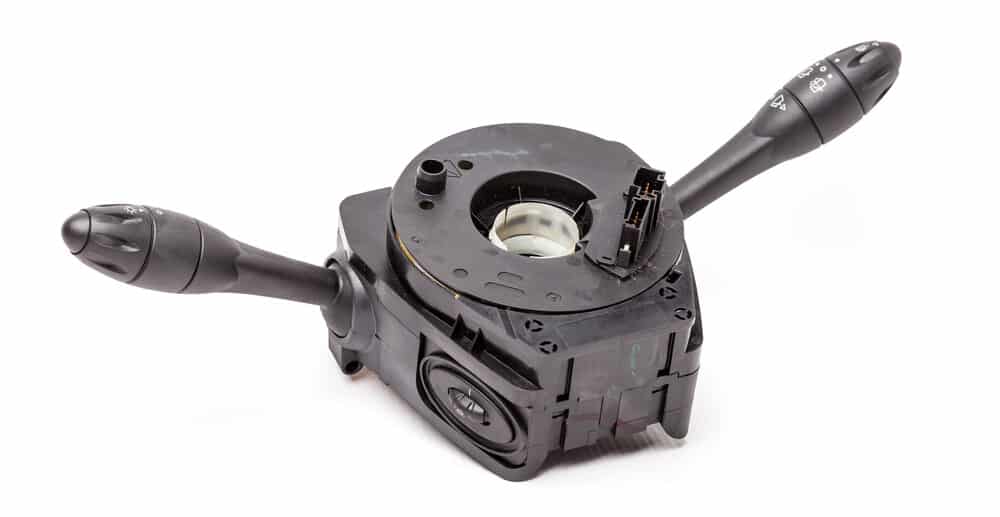
Within the steering column, there’s an angle sensor that measures the degrees of the steering wheel. It also keeps track of its position and evaluates when it returns to its center location. As with other sensors, this one is not immune to failure.
If the steering angle sensor fails to read, the ABS and traction control system will both stop functioning. The light will also come on the dash.
4. Wiring Issues
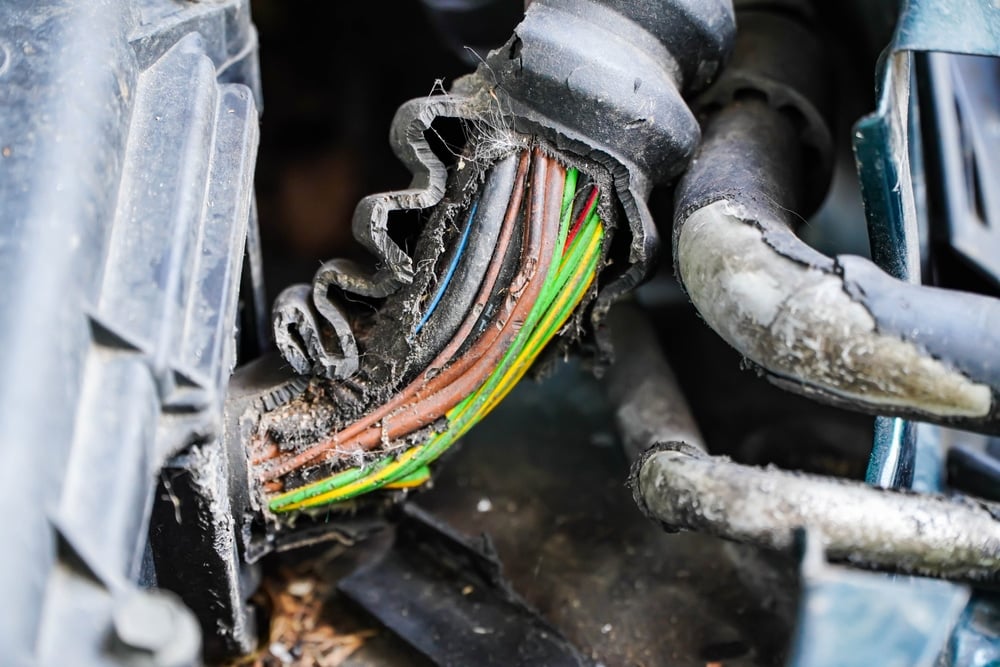
With all of the sensors needed to run these systems, you can expect there to be plenty of wiring and connectors. If any of these wires start to fray or breaks, the connection is disrupted. There could also be corrosion or damage to one of the connectors.
Wiring issues can be tough to pinpoint. Most people don’t want to trace every connection until the break is discovered.
5. Blown Fuse

Fuses are responsible for protecting all of the electrical functions. However, these fuses are known to blow occasionally. With a blown fuse, the Electronic Control Unit (ECU) or ABS control module can’t retrieve the right information, and it registers a fault.
Because the traction control system is connected to the ABS, it’s possible that they will both fail with a blown fuse. You may see lights for both systems on the dashboard.
6. Low Brake Fluid
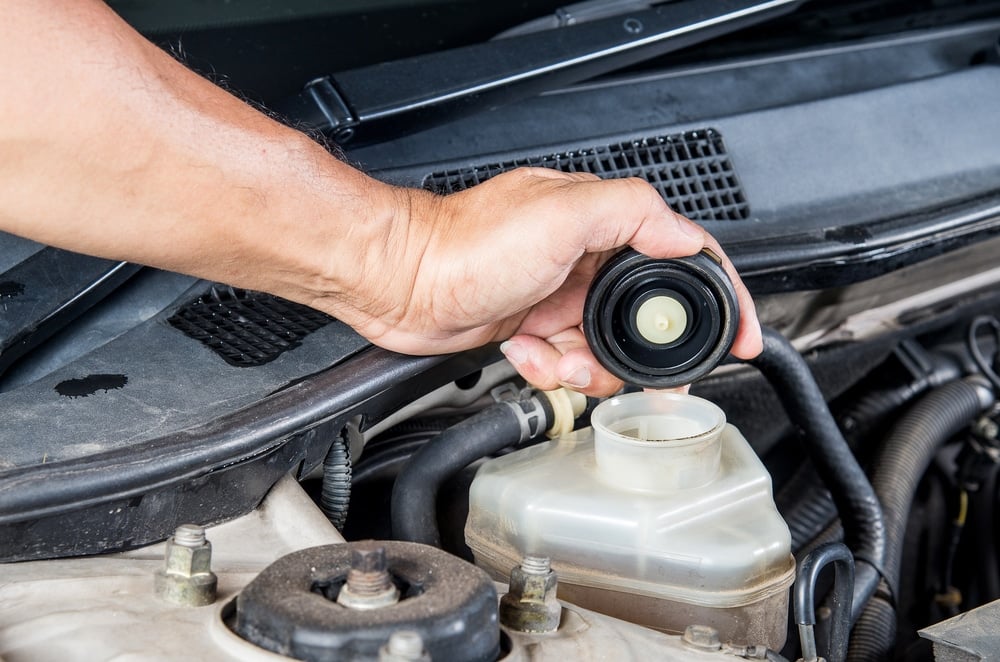
Hydraulic brake fluid is needed to create pressure for the brakes to apply. When the brake fluid gets too low, there won’t be enough pressure for the brakes to work. You may notice a spongy pedal when you push on it. It can also take longer to stop the vehicle. If the brake fluid gets too low, the traction control and brake lights will come on.
There’s never a legitimate reason for the brake fluid to be low because the system is closed. If you notice the levels dropping, it’s probable that there’s a leak.
7. Bad ABS Control Module
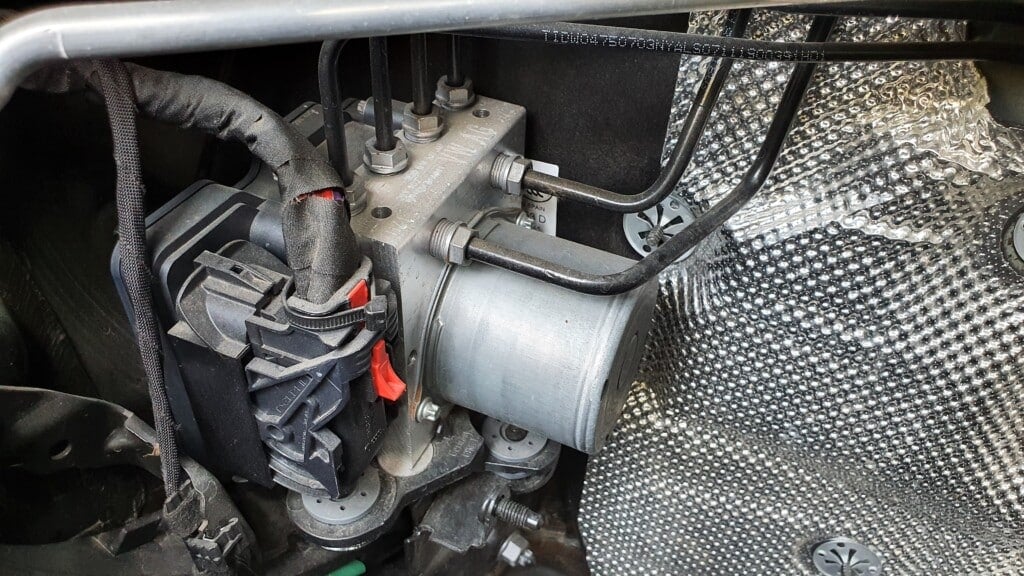
You may not know what the ABS control module has to do with the traction control system. These two systems are connected to one another because they utilize the same parts. The ABS control module is responsible for running through a series of self-checks when the car first comes on.
If a malfunction occurs during this self-check, the ABS light will come on. At the same time, you will also see the traction control light.
8. Low Battery Voltage
When the car battery is weak, you may not be able to get enough power out of it to run the essential systems. When power needs to be regulated, some of the systems malfunction, including the traction control.
The traction control and ABS both need a good amount of power to keep up with the electronic readings and adjustments. Even a short loss of power can make the warning lights come on.
How To Fix A Traction Control That Won’t Turn Off
Once the traction control system stops working, you need to figure out what’s going on so you can drive your car normally again. We have a few steps that we’ve learned by working on cars. If you feel comfortable following these steps, start with number one.
1. Read Trouble Codes From the ABS Control Module

Reading antilock brake codes isn’t the same as typical DTCs. Not every code scanner will read these and you may need to upgrade to something more professional.
Once you pull the codes, it’s your job to figure out what it means and the appropriate fix. Reference our trouble code library for more help.
2. Inspect The ABS Sensor, Ring, and Wiring
Locate the ABS sensor and ring to perform a physical inspection. You also want to look at the wiring. If anything is defective with these parts, you need to replace them.
With a multimeter, a scanner and the steps provided, you can check the readings of the sensor. Reference the directions given to you in the service manual for your vehicle.
3. Check Brake Fluid
Checking and filling the brake fluid is a simple job. Here are a few steps to consider.
- Locate the brake master cylinder reservoir. Look for it close to the firewall in front of where the brake pedal would be found.
- If the vehicle contains a reservoir that’s translucent, you can see the fluid level without taking off the cap. Make sure the fluid reaches the full line.
- With a metal reservoir, you will need to remove the cap to see the level. Examine the fluid line on the dipstick to see where the level is.
- If the system needs more fluid, add it now.
- Remember to look for the leak that’s causing the low fluid and repair that too.
- Replace the cap and see if the lights go off.
While you are looking at the brake fluid, examine if it looks old or contaminated. If it needs to be changed, remember to use the right type of brake fluid.
4. Check Fuses

If you can’t get power to the traction control system, you must check the fuses next. Look at the fuse box diagram to find the corresponding ones to check. Pull out the fuses and check the wire that’s located inside. If the wire is broken, you need to replace the fuse.
All fuses have a specific amp rating. When you replace it, you must put a new one in with the same amperage.
5. Charge The Battery and Reset The Codes
If the battery isn’t charged enough, you can hook it up to a trickle charger or battery maintainer to restore its charge. After charging, if you continue to have the same problems, you may discover that the battery is old and needs to be replaced.
After you figure out the problem and resolve it, you want to use your scanner and clear the codes. This step turns the lights off. If the traction control light comes back on, you have other issues.
6. Contact A Professional
Not all of this is meant to be completed by a novice mechanic. We only feel comfortable performing all of the tasks because of our experience. If you don’t feel like you have enough experience, reach out to a mechanic.
You can do an online search to find a reputable mechanic in your area. Otherwise, talk to co-workers, family and friends to get recommendations.
Can you drive with the traction control light?
The car will continue to work without the traction control system. However, if you encounter a slippery surface, the wheels won’t gain the traction required. This situation puts you in danger, so we recommend having the system repaired sooner than later.
Why is my traction control light staying on?
It’s normal for the light to come on while the system is working, but it should go off. If it doesn’t, a faulty part might be to blame. Inspect the wheel speed sensors, reluctor ring, steering angle sensor, ABS control module, battery, wiring, fuses and the brake fluid.
How much does it cost to fix a traction control system?
It depends on what part is faulty. If you need to replace a fuse or add some brake fluid, your repair cost should be around $10. Some other replacements, such as the ABS control module or the steering angle sensor, can cost much more, usually several hundreds of dollars.
What triggers the traction control light?
The traction control light comes on when the system is activated and working. Once traction is regained, the light should turn off. If it doesn’t, a critical part of the traction control system and ABS has likely failed. To determine the fault, a complete diagnosis is needed.
Can bad tires affect traction control?
Bad tires can make it more difficult to maintain traction while driving on a slippery surface. The traction control system should kick in to make it better. However, it’s best to replace bad tires before you are in dangerous situations. There should be adequate tread left to help grip the road.
There’s no immediate need to be alarmed if the traction control system light comes on. In some cases, it may just be part of the normal operation. The only time you need to worry is if the light doesn’t go off on its own. Even then, there’s no reason to panic.
Take your time and work through our diagnostic steps. It’s normally fairly simple to figure out what’s causing the problem, especially if you have an advanced code scanner. Otherwise, talk to your local mechanic and get the problem resolved before you drive on slippery roads again.
Learn more:
- ABS and Traction Control Light On – Causes & How To Fix It
- Traction Control Light: What It Means And How To Fix It
- Slip Light – Meaning, Causes & How to Fix it
Categories: Troubleshooting, Warning Lights
